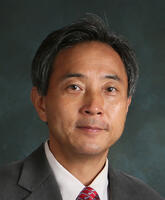経歴
-
2021年04月-継続中
早稲田大学 理事(研究広報;学生・教職員健康管理担当)
-
2020年09月-継続中
早稲田大学 総合研究機構 機構長
-
2019年04月-継続中
早稲田大学総合研究機構ヒューマンパフォーマンス研究所 所長
-
2005年-継続中
早稲田大学 教授
-
2017年04月-2019年03月
早稲田大学重点領域研究機構 ヒューマンパフォーマンス研究所 所長
-
2003年-2005年
早稲田大学 助教授
-
1999年-2003年
東京大学 助教授
-
1991年-1999年
東京大学 助手





Click to view the Scopus page. The data was downloaded from Scopus API in January 02, 2026, via http://api.elsevier.com and http://www.scopus.com .